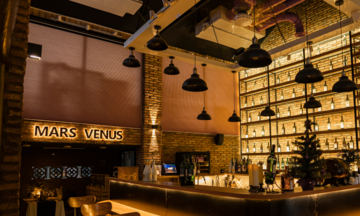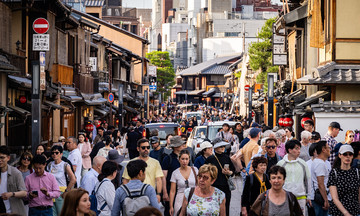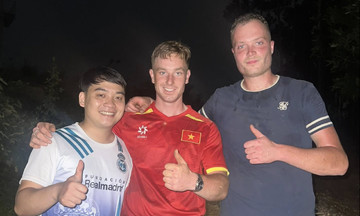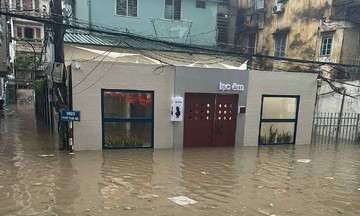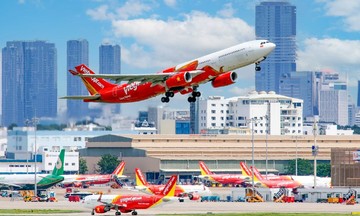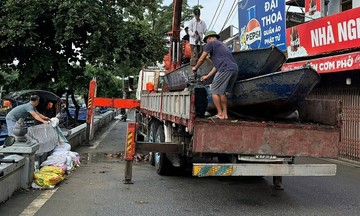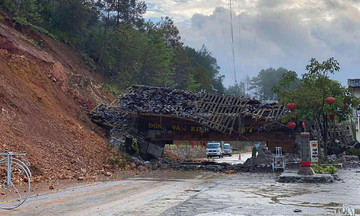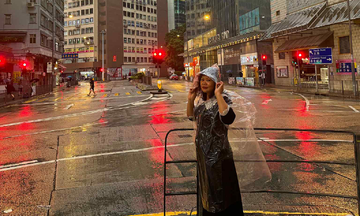Vietnam's peak international tourist season runs from September to April. May to August is typically the off-season, but this year has seen record-breaking numbers, rivaling the peak season of previous years.
According to data released by the General Statistics Office on 6/9, international arrivals in Vietnam reached 1.56 million in July and 1.68 million in August, surpassing the figures for the two peak months of September and October 2024 (1.3 and 1.4 million, respectively). These are the highest ever July and August arrival figures, marking a 16% to 36% year-on-year increase.
Many tourism businesses catering to international visitors in Hanoi, Ho Chi Minh City, and Khanh Hoa also reported a significant surge in inbound tour bookings, ranging from 15% to 40% compared to the same period last year.
 |
International tourists participate in a fish-catching experience in the Mekong Delta during the summer. Photo: Vietluxtour |
International tourists participate in a fish-catching experience in the Mekong Delta during the summer. Photo: Vietluxtour
"I prefer visiting Vietnam during the off-season due to lower airfares, and I enjoy the tranquility of less crowded destinations," said Natacha Santos, 38, from Portugal. She visited Ho Chi Minh City during the summer month of August, exploring the local culture and daily life.
Tourism experts attribute Vietnam's off-season success primarily to recent policy changes.
Tran Thi Bao Thu, Communications Director of Vietluxtour, highlighted three key policy factors driving the summer influx: intensified promotion through cultural and culinary events in major cities like Hanoi and Ho Chi Minh City; and relaxed visa policies, notably the 45-day visa exemption for many countries.
The expansion of direct flights to destinations like Phu Quoc, Nha Trang, and Da Nang, along with increased flight frequency from China, South Korea, India, and Australia, has significantly facilitated travel. Easier access naturally leads to increased visitor numbers.
Vietnam's summer tourism offerings have also diversified. International visitors can enjoy beach resorts in Da Nang, Nha Trang, Phu Quoc, and Ha Long, alongside numerous beach festivals and international events, according to Vu Van Tuyen, General Director of Travelogy Vietnam.
Beyond Vietnam's efforts, global geopolitical trends and travel patterns have also contributed to the tourism boom. Tuyen of Travelogy Vietnam noted a shift in seasonal travel preferences. Post-pandemic, Western tourists are no longer exclusively traveling during autumn and winter (to escape the cold) but are opting for summer trips to take advantage of longer holidays, reasonable prices, and favorable weather.
Vietluxtour representatives echoed this sentiment, stating that their summer clientele primarily hailed from Europe, the US, and Australia. These tourists are less bound by seasonal constraints and are willing to travel during the off-season to capitalize on promotional offers.
Global political instability and economic downturns have led to tighter travel budgets. Some traditional Southeast Asian destinations (like Thailand and Indonesia) are experiencing slower recovery or overcrowding, positioning Vietnam as an attractive alternative due to its affordability, accessibility, and high safety standards.
Extreme weather in Europe this summer also prompted travelers to seek cooler destinations, including Vietnam. According to AFP, intense heat waves "fiercely attacked" Southern Europe (Spain, Italy, Portugal, Greece, and France), with temperatures exceeding 46 degrees Celsius at the start of summer, triggering red alerts in many areas. UN Secretary-General Antonio Guterres announced on 30/6 that "extreme heat in Europe is no longer an anomaly but the new normal".
Recent changes in US visa and tariff policies have deterred some visitors, leading them to seek alternative destinations. A CNBC survey revealed that 58% of respondents "canceled trips to the US" and opted for Southeast Asia instead, including Vietnam.
"The rise of the Asian market has also boosted Vietnam's off-season success," said Pham Ha, CEO of Lux Group, a provider of luxury travel and yacht services.
According to the Vietnam National Administration of Tourism, international arrivals reached nearly 14 million in the first eight months of the year. July and August alone saw over 3.2 million visitors. 50% of these came from three Northeast Asian markets: China, South Korea, and Taiwan. According to CEO Pham Ha, these tourists tend to travel year-round, prioritizing reasonable costs and short distances over seasonal factors.
Additionally, 2025 marks a surge in Russian and Indian tourists, with a 300% year-on-year increase, thanks to direct flights and relaxed visa policies.
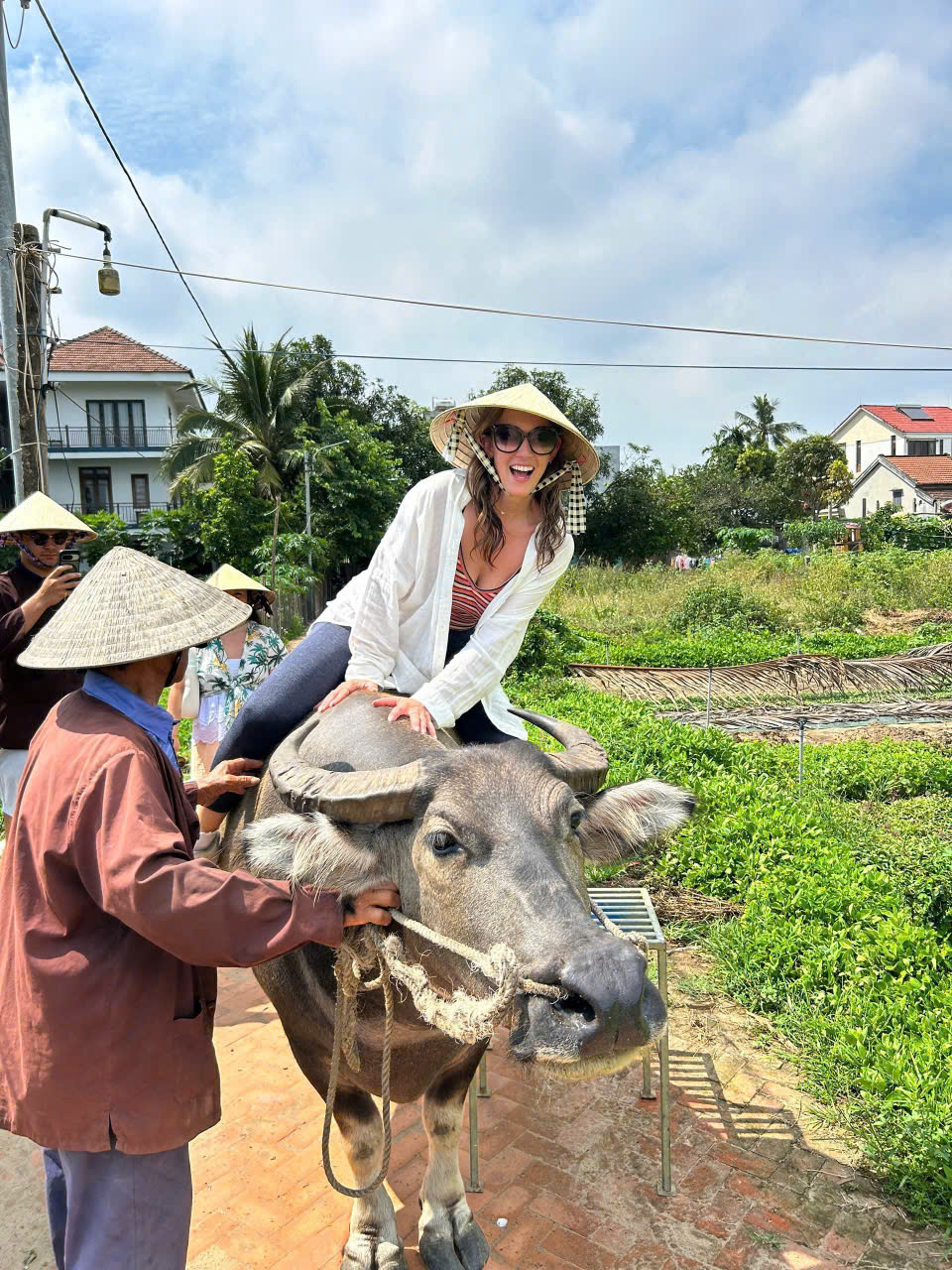 |
International tourists experience water buffalo riding in Tra Que Vegetable Village, Da Nang. Photo: Vietluxtour |
International tourists experience water buffalo riding in Tra Que Vegetable Village, Da Nang. Photo: Vietluxtour
Tourism experts and travel agency representatives predict that with the current growth momentum, Vietnam could welcome 1.8 million international visitors in September, with numbers continuing to rise during the final months of the year, which also coincide with the festival season.
The positive trends in international arrivals during July and August indicate a shift in Vietnam's tourism model from short-term peak seasons to year-round attraction. "This provides businesses in the service sector with a stable customer base, reducing the risk of dependence on a few specific months as before," said Pham Ha, CEO of Lux Group.
Phuong Anh



